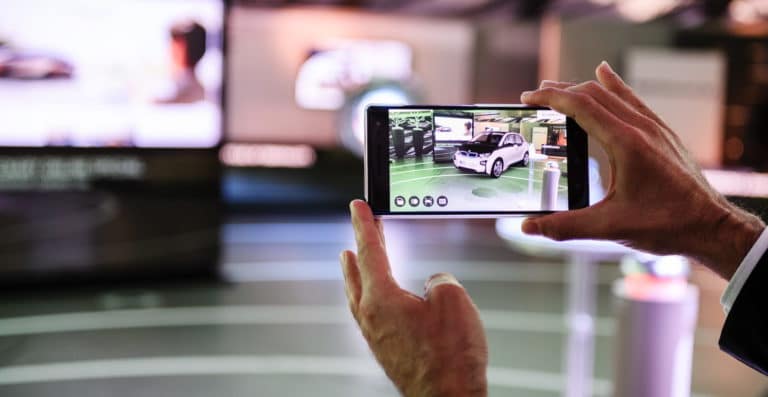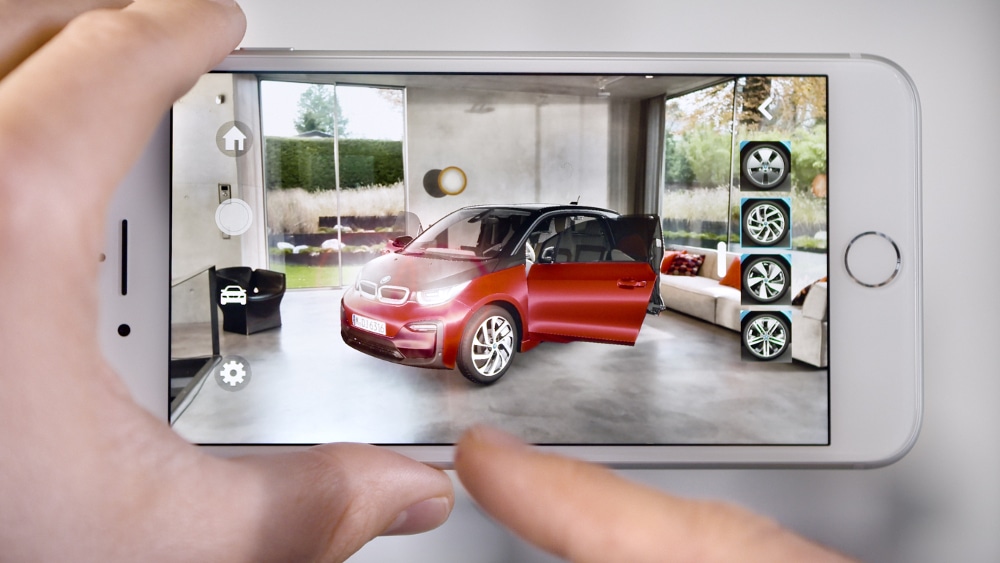
XR Talks is a weekly series that features the best presentations and educational videos from the XR universe. It includes embedded video, as well as narrative analysis and top takeaways. Speakers’ opinions are their own.
One of AR’s benefits is its capacity for “full funnel” advertising and commerce. As we examined in the latest Intelligence Briefing, it can enhance upper-funnel product or brand awareness (think: branded lenses), as well as lower funnel activity like product purchases.
BMW iVisualizer is not only one of the most successful AR apps so far, but it’s big on this full-funnel principle. As we discussed with its partner Accenture XR, it designed the app to lead users from fun/novel AR visualization to real car customizations and dealer transactions.
“We have this link to jump from the app to the BMW web configurator,” said Accenture Digital’s Matteo Alberti on stage at AWE (video below). “This is very important because it continues the customer journey, and of course you can also search for your nearest dealer.”

According to BMW’s Stefan Biermann, the strategy is working. Specifically, more than 25 percent of app starts go from AR car visualization (seen above) to the online configurator. From there they can begin to see prices and local dealer inventory, which BMW calls the “configurator jump.”
“In addition to the immersive experience to the interaction with our cars, what we achieve is that twenty five percent of all app starts then go one step further in essence in our sales funnel,” he said on stage. As they’re led through that funnel, they can see actual cars available near them.
That last part is key, as BMW realizes no one buys a car sight unseen. Though iVisualizer (and AR in general) is proving to be a valuable tool to onboard consumers into product engagement and contextualization, it’s not a silver bullet. People still want to see and touch the actual car.

With that local/immediate gratification in mind, BMW designed the app to only visualize models that are available locally. That ensures high-intent users aren’t disappointed at the dealership. And it shows that optimized commerce — not AR novelty — is a guiding principle of the app.
“In 38 markets, you see the car that you can actually buy,” said Alberti. “This is very important. There is an engine in the app that basically selects and pushes to the customer exactly what you can actually configure and buy in your specific country.”
Also important is the data that BMW is able to collect from a large sample that’s engaged in a high-touch (literally) AR interaction with the product. Ingesting such data can inform regional sales patterns, supply-chain management, inventory and all kinds of marketing insights.
“Using the analytics, you can get lots of information about what users prefer,” said Alberti. “This really adds to the business case. When you build such applications, basically you can collect lots of feedback in real-time about what consumers want.”

But all of this didn’t come easy. As the design-world adage goes, the most simple and elegant products require the most procedural complexity. It was no different for iVisualizer, which took years of product management, several internal stakeholders and lots of coffee, says Biermann.
“The art of doing this is that the final result does not seem to be that complex when it is in consumers hands, but behind that of course there are a lot of efforts,” he said. “BMW is a 100-year old company that is still very much steel based.”
See the rest of the video below which walks through the process of developing the app. It’s also a lesson in how the barriers to AR app creation and wider-scale distribution have lowered — previously requiring custom builds on Google Tango but now unlocked by ARCore and ARkit.
For deeper XR data and intelligence, join ARtillry PRO and subscribe to the free ARtillry Weekly newsletter.
Disclosure: ARtillry has no financial stake in the companies mentioned in this post, nor received payment for its production. Disclosure and ethics policy can be seen here.
